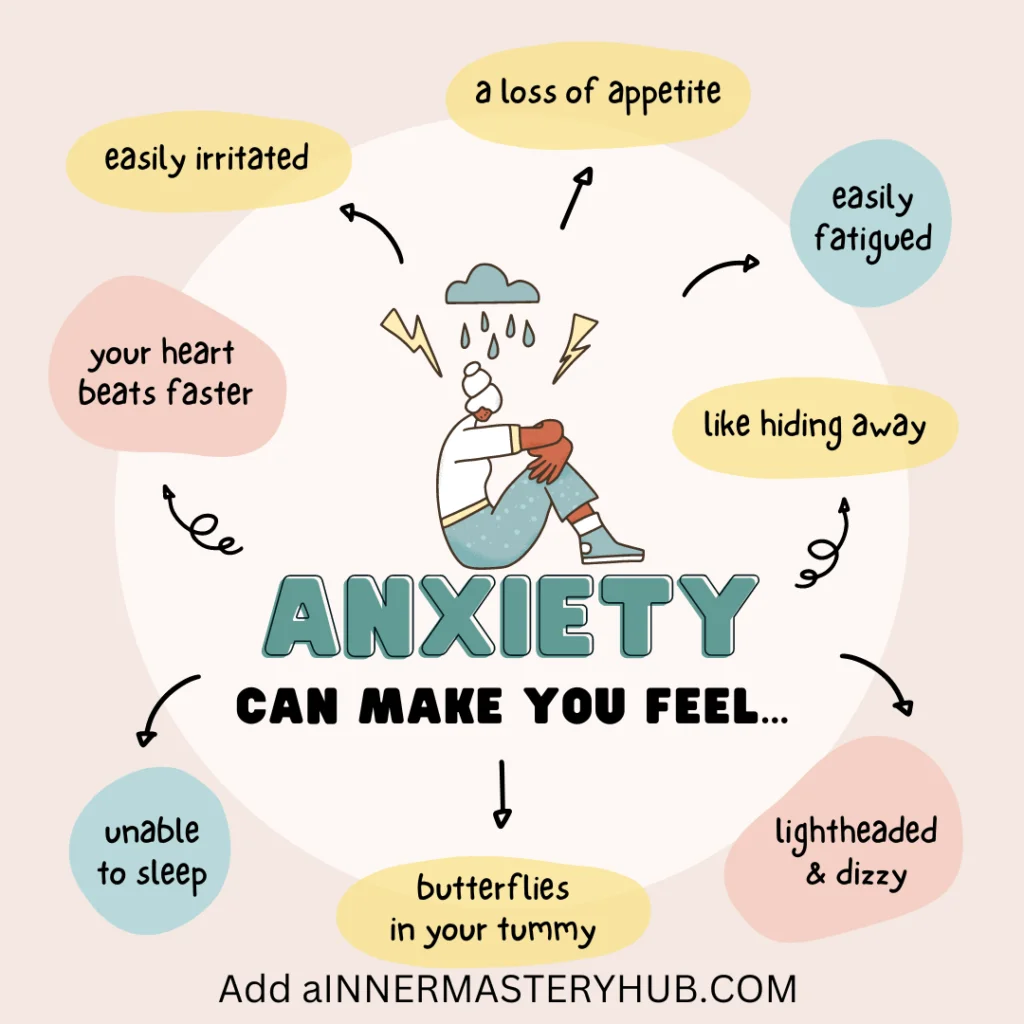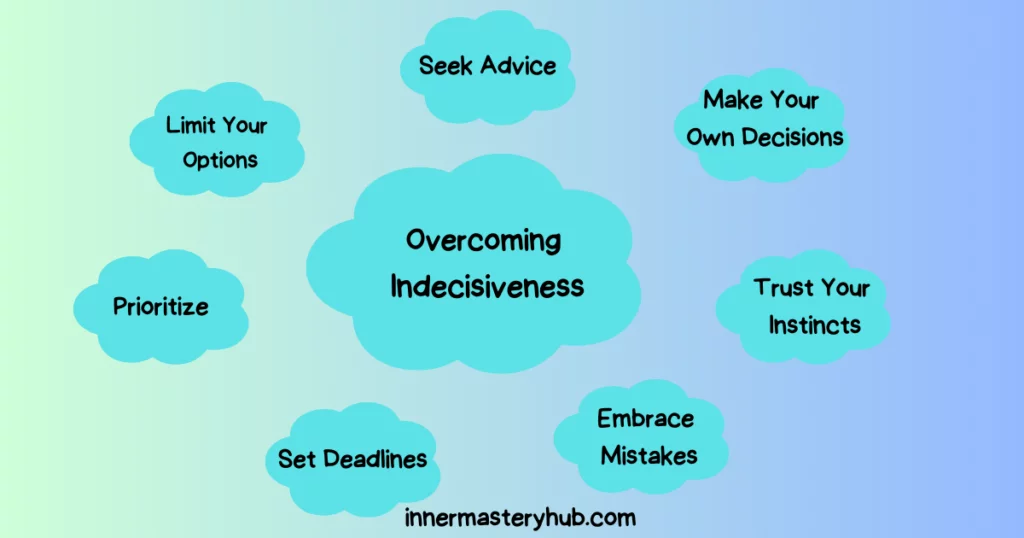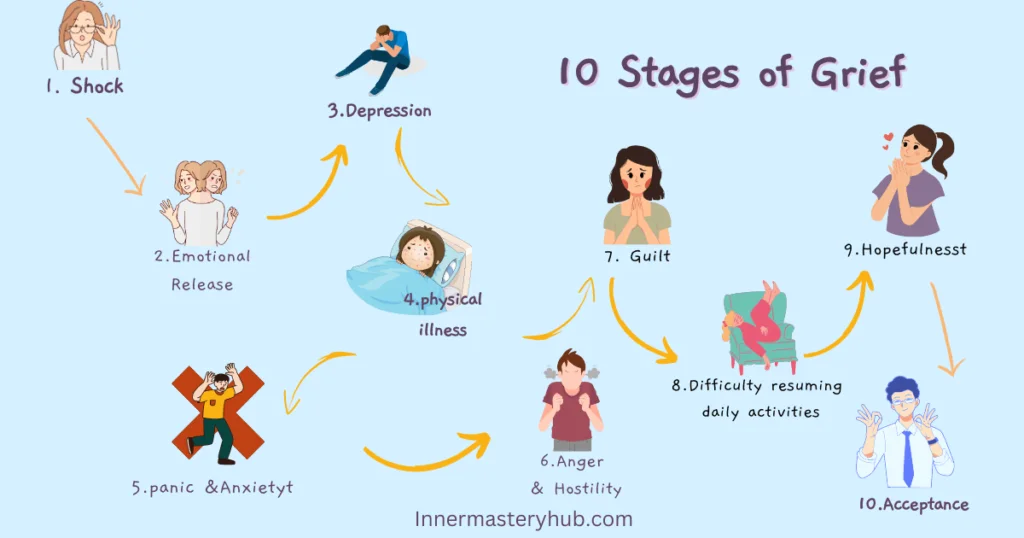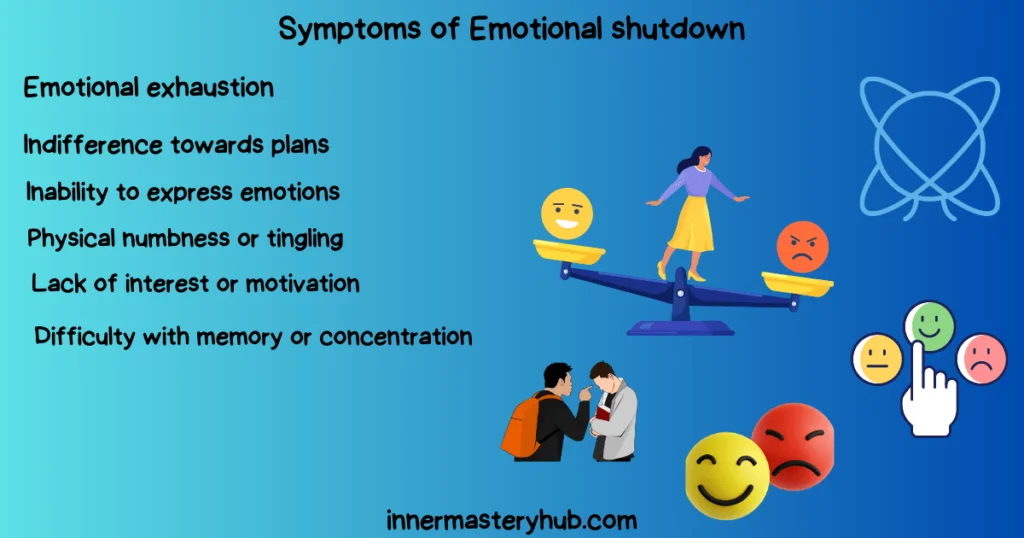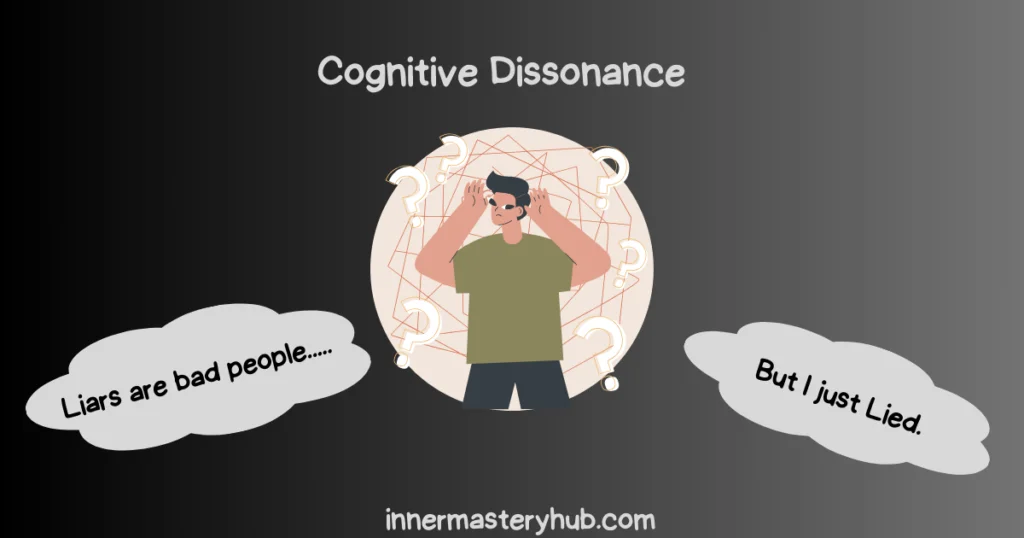
What causes cognitive dissonance?
Inconsistencies in an individual’s beliefs, attitudes, or behaviors can lead to cognitive dissonance. Cognitive dissonance occurs when contradicting facts or experiences cast doubt on a person’s preexisting opinions or views.
It may also happen when a person’s behavior deviates from their morals, causing them to feel uncomfortable and need to make amends. For instance, a person who routinely indulges in junk food but appreciates good eating practices may likewise suffer from cognitive dissonance.
RELATED: 15 Common Cognitive Distortions
Table of Contents
Returning to the Emotional Component of Dissonance Theory
Cognitive dissonance theory’s emotional component describes the psychological pain or tension people feel when they have opposing beliefs or actions. When someone thinks or acts contrary to their principles or beliefs, it can cause psychological anguish.
The degree of emotional pain depends on how important the beliefs or principles are at stake and how much they differ. Dissonance theory’s emotional component encourages people to reduce their internal discomfort by reconsidering their beliefs, changing their actions, or providing an explanation for their choices to find internal harmony and consistency.
For instance, those who use leather goods yet are strong proponents of animal rights may feel emotionally dissonant due to the inconsistency between their actions and their convictions.
Forced Compliance Behavior
A form of cognitive dissonance known as forced compliance behavior occurs when someone feels under compulsion to act contrary to their beliefs or principles.
When people comply with demands made by someone in a position of authority, even when those demands conflict with their beliefs or values, this is known as forced compliance behavior. People may convince themselves that certain behaviors are necessary to fit in, avoid punishment, or maintain the status quo.
The Journal of Abnormal and Social Psychology published Leon Festinger and James M. Carlsmith’s seminal study on forced compliance behavior, “Cognitive Consequences of Forced Compliance,” in 1959.
The aforementioned study results are discussed in this essay along with further analysis and insights regarding cognitive dissonance theory and forced compliance behavior.
This study demonstrates how changing attitudes to align with behavior may lead to people engaging in forced compliance behavior in reaction to rewards or pressure from outside sources.
Challenge current beliefs
A profound and emotionally draining experience, questioning our beliefs can completely change the way we view the world. One strong example of this in real life is Sarah, who was a staunch supporter of a political belief she had cherished for years. In addition to giving her a sense of purpose and belonging, Sarah’s beliefs blended with her identity.
Over time, Sarah’s worldview was called into doubt by encounters and events in her daily life. She had personal knowledge of the struggles and injustices faced by the poor, which caused her to doubt the limits of her beliefs. As she attempted to make sense of the world she was seeing and her strongly held beliefs, she was experiencing a great deal of mental turmoil.
Sarah eventually came out changed. Her perspective on the world evolved, becoming more complex and embracing empathy and compassion.
Cognitive Dissonance Examples
The internal conflict of opposing ideas and beliefs can cause intense emotions when we confront the fundamental contradictions inside ourselves, a phenomenon known as cognitive dissonance. Here are several moving examples that illustrate this phenomenon:
An environmentalist at heart, Sophie works for a company that has a reputation for having harmful environmental practices. Every day, she witnesses how her employer’s actions negatively impact the planet she loves.
Sophie’s job and her values are at odds, which leads to a great deal of emotional pain. She struggles to reconcile her beliefs with the demands of her professional life, feeling guilty and frustrated.
For John, who has smoked all his life, the medical outlook is dire. Now, when he thinks about the overwhelming evidence that smoking is unhealthy, he experiences a flood of conflicting feelings. He refuses to give up his addiction and turns to smoking’s familiar rituals and comfort for relief.
He thus feels fear and sadness over his choices as he is aware that smoking will only make his health worse. Between his desire to stop and his addiction, John faces cognitive difficulties that lead to a tumultuous emotional battle.
The emotional toll that cognitive dissonance takes is demonstrated by these examples. People who struggle to experience and resolve cognitive dissonance may feel guilty, irritated, regretful, anxious, or frustrated by the discrepancy between their beliefs, behaviors, and circumstances.
Denying, Rejecting, or Avoiding Information
Here are some instances of information being denied, rejected, or avoided:
A person who is addicted to drugs or alcohol may reject or ignore information about the harmful effects of substance use in order to keep using them.
- In an abusive or toxic relationship, a person may decide to keep information about their partner’s behavior hidden to maintain the relationship.
- A person who is struggling financially may reject or ignore suggestions for improving their money management to avoid making unpleasant lifestyle adjustments.
- Individuals who have strong religious or political beliefs may reject information that challenges them to maintain their beliefs, sense of self-awareness, and control group membership.
- Due to stigma or fear associated with mental illness, a person who is experiencing mental health concerns may refrain from obtaining information about their condition or available treatments.
Consider the importance of dissonant thoughts!
Dissonant ideas are important because they show a difference in attitudes, behaviors, and beliefs. We get uncomfortable with this and change our opinions or actions as a result.
Because it challenges our assumptions, dissonance presents a priceless opportunity for reflection, growth, and change. These concepts have the potential to foster more empathy and understanding for others as well as more effective problem-solving.
Embracing opposing viewpoints can foster positive transformation and human growth.
Dissonance Reduction Strategies and Motivations: Current Accounts
The emotional dynamics that underpin our desire to eliminate cognitive dissonance have been clarified by research on reasons and strategies for doing so. These justifications highlight the fundamental causes of our acts as well as the complex relationships that exist between our feelings, convictions, and actions.
Johnson and Smith’s (2022) well-known study looked at the psychological underpinnings of dissonance reduction strategies. To mitigate the unpleasantness of dissonance, they found that people often employ various emotional coping strategies.
To find emotional solace, individuals may, for example, engage in self-affirmation, which involves highlighting their positive traits or views. In the face of opposing viewpoints, this strategy helps them maintain their emotional stability.
The study examined how motivation functions in the process of reducing dissonance. The painful emotional suffering that dissonance produces motivates people to get rid of or lessen it. Dissonance’s accompanying fear, anxiety, and uneasiness compel us to restore internal balance.
To lessen emotional turmoil, we try to connect our thoughts and behaviors with emotional stability and coherence. The study also found that our beliefs’ emotional relevance can affect how much dissonance we experience.
Decision-Making
The process of identifying, evaluating, and choosing options to address a particular issue or accomplish a certain goal is called decision-making. People usually choose the best solutions by using their cognitive abilities, prior experiences, feelings, and available information.
Making good decisions requires strong judgment, critical thinking, prioritization skills, and the ability to balance the advantages and disadvantages of numerous options. Depending on the type of decision, the complexity of the problem, and individual values, beliefs, and biases, the decision-making process may vary.
Making a good choice can have a big impact on businesses, people, and society at large.
Example of Cognitive Dissonance
One instance of cognitive dissonance is when someone smokes despite knowing that it is bad for their health. Their opinion that smoking is harmful and their behavior—that they keep smoking—create cognitive dissonance as a result.
In order to reduce the discomfort caused by this and overcome cognitive dissonance, the person may change their behavior (such as giving up smoking), reject or dismiss the conflict completely, or modify their beliefs (such as justifying that smoking helps them cope with stress).
This illustration demonstrates how uncomfortable and tense cognitive dissonance can be when a person’s beliefs and behavior are not in harmony, possibly leading to the adoption of strategies to lessen the disparity.
A Theory of Cognitive Dissonance – Leon Festinger
The cognitive dissonance theory of Leon Festinger states that people have an innate need to ensure that their attitudes, ideas, and behaviors are in line with their actions or behavior. A contradiction or mismatch leads to cognitive dissonance, which in turn leads to psychological distress.
People try to remove cognitive dissonance, according to Festinger, by altering their opinions, bringing together previously held beliefs, altering their conduct, or gathering new information to support their convictions.
This theory holds that internal consistency is something that humans naturally maintain and that it can affect attitudes, behavior, and decision-making. It clarifies social psychology and the ways in which people minimize cognitive dissonance by defending or rationalizing their decisions and behaviors.
Feasibility of the Emotion Regulation Perspective on Dissonance-Reduction Processes
Those who wish to lessen cognitive dissonance should control their emotions and emotional reactions, according to the emotion regulation perspective on dissonance-reduction methods.
Emotional processing, according to this hypothesis, helps people deal with conflicting information and lessens dissonance. The circumstances, as well as the individual’s emotional intelligence and self-control, influence this view. Some people have superior emotional regulation skills.
The ability to control emotions may be hampered by greater distances between ideas and behavior. The theory of cognitive dissonance’s cognitive component is recognized by the emotion regulation perspective. Controlling emotions can ease discomfort, but it won’t address cognitive dissonance brought on by conflicting attitudes and behaviors.
Justifying behaviour
To justify behavior is to use one’s identity or principles to defend or explain one’s choices or behaviors. According to the theory of cognitive dissonance, this can ease the discomfort caused by differences between one’s beliefs and behavior.
However, defending actions could be problematic if they involve immoral or unethical behavior or if they disregard information that challenges their beliefs. Take into account the likely consequences as well as the guiding principles and ideals that motivate the behavior.
Secondary Reduction Stage
The process of secondary reduction is a very emotional one. Discover who we are by confronting our anxieties, insecurities, and unsettling truths. Making our way across this complex emotional terrain can leave us feeling empowered, hopeful, apprehensive, and irritated.
We can better comprehend our feelings and the dissonance reduction process by identifying the secondary reduction stage. As we balance disparate opinions and views, it emphasizes emotional self-care, empathy, and patience.
We become stronger and more emotionally resilient when we embrace this emotional stage with empathy and self-compassion. We also gain a deeper understanding of ourselves and our changing perspectives. Personal development, well-being, and more sincere relationships with others and ourselves are all facilitated by dynamic change.
4 Ways to Address Cognitive Dissonance
Cognitive dissonance is the mental discomfort that occurs when a person believes two or more opposing beliefs, attitudes, or behaviors. Here are four strategies for dealing with cognitive dissonance:
Adjust behavior. When someone encounters cognitive dissonance, they may adjust one of their behaviors to reflect their new values or beliefs. This may lessen the psychological suffering brought on by the contradictions.
Learn more. Lack of knowledge or understanding can also result in cognitive dissonance. Gaining more knowledge or an alternative viewpoint may be helpful in this situation.
Modify attitudes or beliefs. On the other hand, a person’s behavior may alter their attitudes or beliefs. Although it can be a challenging process, this can help resolve cognitive dissonance.
Accept the inconsistency. In certain situations, cognitive dissonance may not be resolved by improving conduct, modifying preexisting beliefs, or obtaining further information. In certain cases, letting go of the mental pain and moving on could be best achieved by accepting the disparity.
How to reduce cognitive dissonance
Here are some strategies for reducing cognitive dissonance:
Reevaluate attitudes and beliefs. One way to reduce cognitive dissonance is to reevaluate one’s attitudes and beliefs. By checking that one’s beliefs and values align with one’s actions, cognitive dissonance can be lessened.
Adjust behavior. If one’s actions cause cognitive dissonance, they can be changed to reduce the contradiction.
Look for consistency. To lessen cognitive dissonance, look for consistency in attitudes, behavior, and beliefs. The general discomfort caused by dissonance can be lessened and the specific dissonance can be helped by striving for consistency.
Ask for help. It could be helpful to ask a trusted friend, relative, or mental health professional for assistance in overcoming cognitive dissonance.
Engage in mindfulness. By enabling one to examine one’s thoughts and feelings without passing judgment, mindfulness can lessen mental discomfort and cognitive dissonance.
Induce effort
The connection between mediocrity and excellence, as well as between dreams and realities, is effort. It separates those who aim for more from those who settle for less. So, my friend, I beg you to try your hardest. Recognize the sacrifices, tears, and sweat needed as necessary steps on the path to success.
Remember why you began this journey in the first place whenever you feel like you can’t continue when the weight of the world seems too great to bear. Bring your passion back to life. Envision your aspirations and objectives, and let them motivate your endeavors.
Surround yourself with people who will inspire and uplift you. Seek help and encouragement from family members and friends.
Cognitive Dissonance: 50 Years of a Classic Theory – Joel Cooper
This idea was developed by Leon Festinger in 1957 and has since grown to be a fundamental component of social psychology research.
In “Cognitive Dissonance: 50 Years of a Classic Theory,” Joel Cooper examines the development, applications, and history of the cognitive dissonance theory during the past 50 years. He emphasizes the theory’s impact on various sectors, from business and advertising to political and social activism.
People are motivated to reduce the cognitive dissonance they encounter when they have contradictory beliefs or actions, according to one of the fundamental findings of cognitive dissonance theory. This frequently entails adjusting one of the beliefs or behaviors to better match the other.
Cooper notes that several phenomena, such as prejudice, discrimination, and incentive and decision-making systems, have been explained by the cognitive dissonance theory.
He also talks about the current expansion and modification of the original idea of cognitive dissonance, incorporating research from behavioral economics, neuroscience, and other fields.
The Original Dissonance Theory and Related Research
According to the original dissonance theory, which was created by the brilliant psychologist Leon Festinger, people suffer emotional dissonance—a tremendous discomfort within their inner being—when they see a contradiction or difference between their beliefs and their behavior. Festinger claims that people are motivated to resolve internal conflicts and reestablish mental harmony by cognitive dissonance.
To have a better understanding of this concept and its cognitive implications, I encourage you to examine the outstanding research on this topic. One notable study, “Cognitive Consequences of Forced Compliance” by Festinger and Carlsmith (1959), indicated
how those who acted in a counter-attitude manner felt more and more cognitive dissonance, which caused them to change their beliefs to match their conduct. This study sheds light on the emotional turmoil that arises when our actions go against our deeply held beliefs.
How Attitude Change Takes Place
This emotional upheaval offers the chance for development and change. Changing our attitude can broaden our horizons, increase our comprehension of the world, and foster empathy and interpersonal relationships. By making us reevaluate the prejudices that initially shaped our view, it can help us see the world in a different light.
An encounter, an idea, or an incident that upends the status quo can serve as a spark, which frequently starts a process of transformation or attitude change. It makes us examine the logic of our existing opinions, research the evidence for them, and take into account different points of view. This space for emotional and intellectual exploration is where the seeds of change are planted.
Self-reflection, or an introspective journey when we examine the origins and causes of our beliefs, is necessary to accept attitude change. It necessitates a readiness to face our prejudices, own up to our errors in judgment, and accept the discomfort that comes with personal development.
As you navigate the terrain of mental reorganization and attitude change, keep in mind to be kind and gentle with yourself. Transformation is a slow process that rarely happens all at once. Accept all of the emotions that surface, including excitement, perplexity, and even resistance, since they are all woven into the exquisite fabric of advancement.
Provide a safe space and consider the use of relaxation techniques
Creating a comfortable environment and employing relaxation techniques might aid in attitude modification.
1.Safe Space: Establishing a welcoming and safe atmosphere can help individuals relax and be more receptive to different viewpoints. People can express themselves in a secure setting without worrying about criticism or condemnation.
This may entail establishing a secure, accepting environment where people are appreciated and understood. People who feel protected are more inclined to be receptive to different perspectives.
2. Relaxation Methods: Deep breathing, mindfulness, and meditation are examples of relaxation methods that can help people feel less stressed and anxious, which can influence their capacity to change their mindset.
By promoting calm and relaxation, these techniques can increase people’s receptivity to fresh viewpoints and ideas. Additionally, it can help people release unwanted emotions and sentiments that can impede attitude development and adjustment.
A General Model of Dissonance Reduction
In psychology, the concept of cognitive dissonance suggests that when people have opposing views, attitudes, or behaviors, they feel uncomfortable or dissonant. To restore mental harmony and lessen cognitive dissonance, people employ several strategies. The following is a general dissonance reduction model:
Dissonance Recognition. Realizing that two or more thoughts are inconsistent or at odds with one another is the first step. When one’s beliefs, ideals, or behavior clash, this realization may happen.
People assess the importance and severity of the cognitive dissonance instances they are experiencing. The significance of the conflicting elements and how they affect a person’s self-concept may determine how uncomfortable they are.
When confronted with dissonance, people may look for more information or perspectives to resolve the dispute. Researching, discussing the topic with others, or thinking back on one’s own experiences are some examples of this.
Shifting Attitudes. One tactic for lessening dissonance is to adjust or change one’s beliefs, attitudes, or actions to align with this. Justifying or rephrasing the opposing viewpoints and exposing oneself to material that confirms one’s current opinions are two examples of this process.
Behavior Modification. Changing one’s behavior to conform to the desired cognitive process is another tactic. Restoring unity and minimizing inconsistency can be achieved by this behavioral change. For instance, someone who values environmental preservation and discovers they have been wasteful can start taking action to reduce their ecological imprint.
Seeking Social Support. Dissonance can also be lessened by exchanging ideas and looking for social support from like-minded people. The discomfort that comes with competing viewpoints is lessened when one surrounds themselves with like-minded others because they feel acknowledged and reinforced in their chosen cognition.
Acceptance or Rejection. By acknowledging the disagreement and getting past their discomfort, people can choose to accept the dissonance. As an alternative, people could favor the second cognition and reject the first, resolving the cognitive conflict by aligning their beliefs, ways of thinking, or actions.
Remedies for Past Methodological Shortcomings: A Practical Example
One useful example of resolving previous methodological issues is the implementation of a strong research design with a higher sample size, randomized controlled trials, and sufficient control groups. Biases can also be lessened by employing blind or double-blind procedures.
Standardized measures and well-defined operational definitions guarantee the validity and reliability of measurements. Open data sharing and transparent reporting promote repeatability and transparency. Research quality and scope can be enhanced by working with interdisciplinary experts.
Lastly, performing meta-analyses and replication studies aids in validating results in a variety of settings. The scientific basis is strengthened, methodological rigor is raised, and research findings are more credible and broadly applicable as a result of these procedures.
How is dissonance related to cognitive bias?
Cognitive bias and dissonance are linked by their effects on cognition and decision-making. People employ a variety of techniques to try to lessen the inconsistency when conflicting thoughts make them uncomfortable.
Conversely, habitual thought patterns that depart from logic or accuracy are referred to as cognitive bias. Errors in judgment and decision-making can result from biases in information processing.
By encouraging people to selectively see, interpret, or retain information that confirms their preconceived notions, dissonance can reinforce cognitive biases.
Understanding the interaction between cognitive biases and dissonance is critical for recognizing and minimizing their impact on cognition.
Prevalence and Variation of Emotional Reactions
A crucial aspect of the human experience, emotional responses can vary greatly between individuals and circumstances. The following important factors regarding the variety and frequency of emotional reactions should be taken into account:
- The frequency of emotional reactions. A common aspect of the human experience is emotional reactions. All people experience emotions in response to different situations, however, the intensity and frequency of these reactions differ from person to person.
2. Variation. People’s and situations’ emotional responses can differ greatly. For instance, a spider may cause violent reactions in some people but not in others. In a similar vein, the same individual may react emotionally differently depending on the context.
3. Cultural Differences. Emotional responses can be greatly impacted by cultural factors. Varied cultures may have various standards and expectations for emotional expression and differences in acceptable or desirable emotions.
4. Variability in emotional reactions can also be influenced by gender differences. Men are more likely to exhibit and communicate anger, while women are more likely to demonstrate and express emotions like fear and grief, according to studies.
5. Changes in Development. Over time, emotional responses may change. Emotions such as joy and pain may be experienced by infants, while more complex emotions like love and remorse may be experienced by adults.
Prevalence and Variation of Dissonance-Reduction Strategies
Strategies for reducing dissonance are widespread and vary from person to person. Depending on their traits and the circumstances, people use a range of techniques to lessen cognitive dissonance.
Seeking social support, exposing oneself to information that supports prior ideas, reevaluating the significance of competing viewpoints, and modifying one’s beliefs or attitudes to align with action are common tactics.
The prevalence and efficacy of these strategies, however, can vary. Cognitive ability, cultural background, and the significance of dissonance all affect the tactics used. Individual variances in self-reflection, cognitive flexibility, and willingness to change also influence the variability in dissonance-reduction tactics.
Acquire new information that outweighs the dissonant beliefs.
One useful strategy to lessen cognitive dissonance is to learn new information that transcends the concepts that contradict one another. When people come across material that challenges their opinions or beliefs, they could look for fresh information or insights to assist them make sense of the differences.
This method comprises using critical thinking techniques, actively seeking out information from reliable sources, and keeping an open mind to different viewpoints.
Learning accurate and engaging new information can help people reduce cognitive dissonance and align their beliefs with new knowledge. This method encourages cognitive growth, flexibility, and the potential for better, more informed decision-making.
Change one or more attitudes, behaviors, beliefs, etc., to make the relationship between the two elements consonant.
A person can achieve cognitive consonance by altering one or more of their beliefs, attitudes, actions, or other mental characteristics. This strategy comprises modifying existing cognitions to align with one another, removing cognitive dissonance.
For instance, a person can modify their behavior to align with their beliefs if they have beliefs that conflict with their actions. As an alternative, people can alter their opinions to reflect their actions.
Self-reflection, introspection, and a readiness to modify one’s beliefs or behavior are all necessary for this process. By bringing their cognitions into concordance, individuals restore cognitive harmony and minimize the psychological distress commonly associated with inconsistency.
Psychometric measurement scales
Sweeney, Hausknecht, and Soutar (2000) devised a 22-item scale to assess cognitive dissonance in the immediate aftermath of a purchase. It investigates three aspects of cognitive dissonance:
Emotional effects of the purchase (‘I felt annoyed after purchasing this thing’)
Decision on the purchase’s wisdom (‘I wonder if I made the proper choice)
Concerns about the transaction (‘After I bought this thing, I wondered if they had duped me’)
The questionnaire is available for free download on ResearchGate.
Koller and Salzberger (2007) created an eight-item measure to assess customer behavior. Their questionnaire contains questions about the decision-making process before and after the purchase. The authors’ full manuscript can be free on the ResearchGate website.

